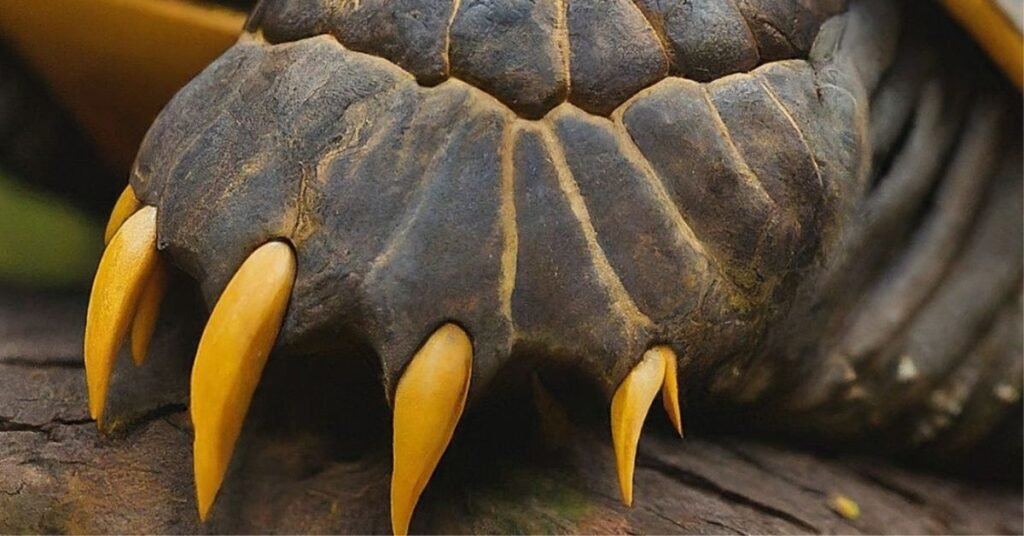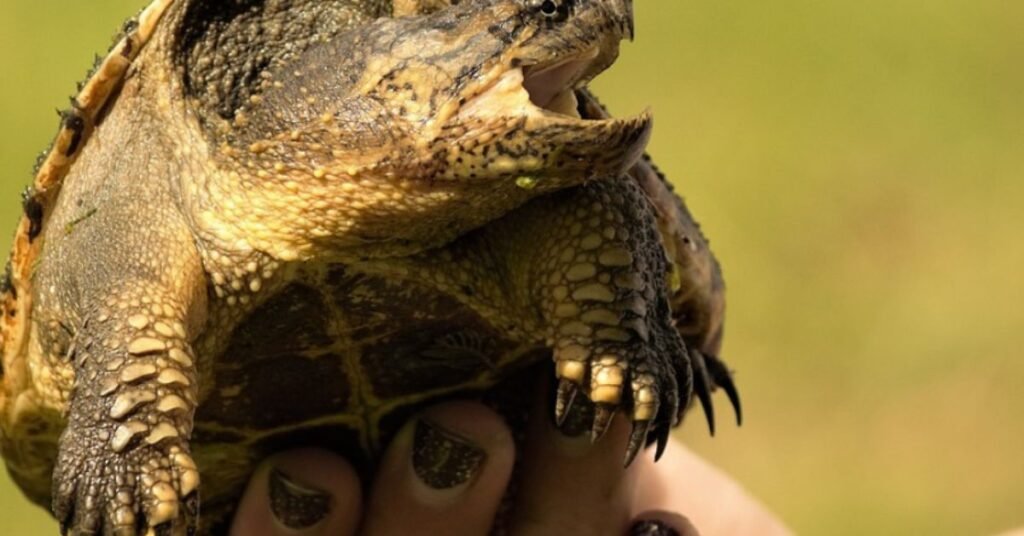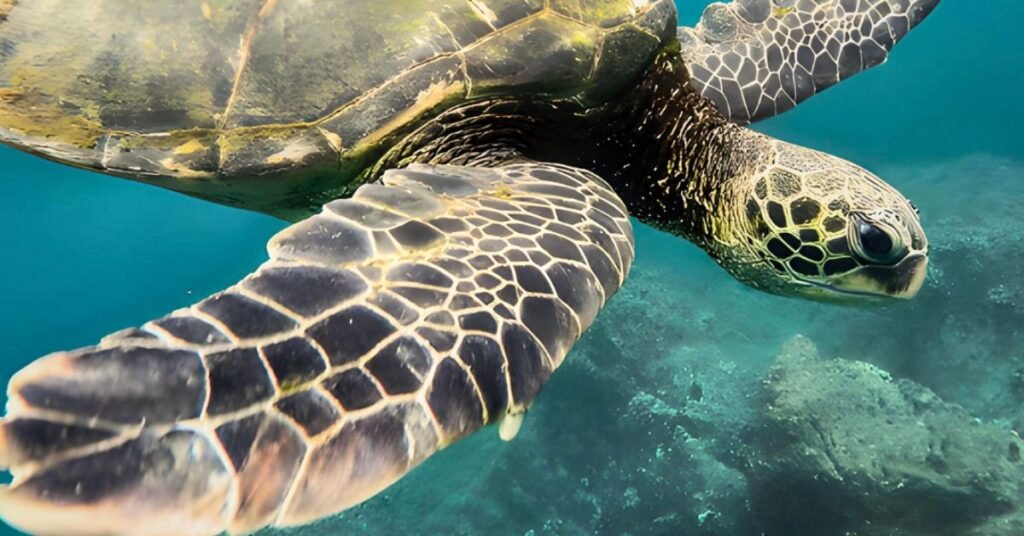Turtles are fascinating creatures with unique anatomy. When you think of predator animals, the image of claws with sharp nails comes to your mind first. However, not all animals have claws. If you are a turtle enthusiast, you may wonder: do turtles have claws?
One of the standard features of most turtle species is their claws. They have four sharp claws on each limb; using them, they can easily overcome the terrain and climb.
Meanwhile, aquatic turtles’ webbed feet and long claws make things convenient in the water. We already answered that turtles have claws, but in this post, we will discuss this question in depth: “Do turtles have claws?” Also, what turtle types have claws?
Table of Contents
Do Turtles Have Claws?

Yes, turtles have claws. Not all 356 turtle species have claws, but most of them, including tortoises and aquatic turtles, have claws on each of their limbs. There are different shapes and types of claws based on the various turtle species.
Turtles’ claw shapes depend on their environmental adaptations. For example, a land-dweller turtle’s claw shape is built to wander around dry places. Meanwhile, aquatic turtles’ claws are adapted to navigate in a watery environment and on land.
Types of Turtles and Their Feet
Turtles are one of the most diverse reptiles, so their physical patterns, such as feet and shells, show a wide variety of adaptations. For swimming, aquatic turtles have flippers, while land turtles have webbing and claws.
Aquatic Turtles
They are adapted to life in water. Their flat feet with sharp nails are designed to help them swim and move in their aquatic habitats.
Flippers for Swimming – Aquatic turtles have flippers like flat-shaped claws that are powerful and streamlined for efficient movement in water. Aquatic turtles common examples include sea turtles. Leatherback and green sea turtles are examples of turtles with flippers.
Vestigial Claws: The Hawksbill turtle also has small and less functional claws. They are vestige turtles and do not even have shells to protect their feet. Aquatic turtles live and hunt in the water, but they often sunbathe. Their webbed feet allow them to climb logs and rocks.
Examples of Semi-Aquatic Turtles
1. Red-eared sliders: They are found in the water or land environment, and they are very slow and muddy. Red-eared sliders are freshwater turtles and have webbed feet with claws used for swimming. They also need their claws to climb rocks and logs.
2. European pond terrapin: These are found in European ponds and lakes. Their legs are webbed, but they are not good swimmers. However, their webbed feet help them navigate both in water and on dry surfaces.
3. African aquatic side-neck turtle: These turtles are found near streams and creeks in eastern Africa. They have a long neck and webbed feet.
Land turtles
Land turtles are also known as tortoises. Since they live on land, their feet are not designed for swimming. Instead, they are designed for walking, digging, and other tasks that help them survive in terrestrial environments. Land turtles have an intermediate appearance and are a mixture of both.
Land turtles have robust and sturdy legs and feet, and their claws are used for digging. Tortoises use their claws to move around and hunt food. Land turtles have scales, webbing, and strong claws on their feet.
1. Box Turtle: These turtles have domed shells and live in woodlands or grasslands. They have sturdy legs with claws for digging and navigating their terrestrial environment.
2. Gopher Tortoise: Gopher tortoises are found in sandy or desert habitats. They use their strong, clawed legs to dig extensive burrows, which provide shelter and a stable environment for other animals.
3. Indian Star Tortoise: Indian star tortoises have a star-patterned shell and thick, column-like legs with claws adapted to life on dry land.
Although the two types of turtles have many similarities, their behavior and physical structure vary depending on where they live.
Why Do Turtles Have Claws?

Turtles have claws for various reasons, including survival and daily activity. Their claws, typically found on the front and back legs, serve several purposes. Turtles use their claws for digging, climbing, and grasping objects, which are essential to both land and water life.
Digging
Turtles use their claws to dig nests where they lay their eggs. This is especially important for species like snapping turtles, which travel long distances to nest.
Climbing and Grasping
Turtles use their claws to climb over obstacles and grasp food. For instance, box turtles use their sharp claws to climb steep hills, dig for food, and even for defense if necessary.
Swimming
Aquatic turtles have different adaptations. They use their flippers for swimming. However, some species, such as sea turtles, have small, pointed claws that help them maneuver on sandy beaches during nesting seasons.
Foraging
Turtles use their claws to find and catch food. Terrestrial turtles, like box turtles, dig through the soil and leaf litter with their claws to find insects, worms, and other small creatures.
Semi-aquatic turtles, like snapping turtles, use their claws to tear apart fish, amphibians, and even smaller reptiles. The claws help them grab slippery prey and consume it effectively.
Protection
Turtles use their claws as a defensive mechanism. When threatened, turtles can use their sharp claws to fight off predators. Snapping turtles, for instance, have long, sharp claws to defend themselves. Turtles need these claws for self-defense so they can protect themselves from potential dangers.
There are more functions than these five, but these three are the primary uses of turtles’ claws. Turtle claws differ in patterns and structure based on species.
Do Sea Turtles Have Claws?

Yes, sea turtles have claws. These claws are typically located on their front flippers. As they go through different stages of their lives, these claws serve many other functions. However, sea turtles’ claws are not as sharp as those of land turtles.
Sea Turtles Claw Characteristics and Functions
Hatchling Stage
- Emergence from Eggs: Sea turtle hatchlings use their claws to break out of their eggs and dig through the sand to reach the surface.
- Climbing and Crawling: Claws help hatchlings get from the nest to the ocean by giving them traction.
Adult Stage
- Mating: Male sea turtles use their claws to grip the shells of females during mating. It helps them maintain their position in the water while copulating.
- Nesting: Female sea turtles use their claws to dig nests in the sand where they lay their eggs. The claws move sand efficiently to create a suitable nest.
- Feeding: Some species, like the hawksbill turtle, use their claws to grasp and tear food. The sharp claws of Hawksbill turtles help them eat sponges and other invertebrates on coral reefs.
Do all Turtles Have Claws?
It might surprise you, but not all turtles have claws. The type of feet a turtle has depends on where it spends most of its time.
Many freshwater and land-dwelling turtles, like box turtles and snapping turtles, come equipped with powerful claws. But there’s an exception to every rule. Leatherback sea turtles, the biggest sea turtles in the whole world, don’t have claws at all. They have super sleek flippers built for swimming long distances and diving deep underwater.
Unlike other sea turtles with claws for gripping and mating, leatherbacks have soft, flexible flippers that help them zoom through the water like underwater rockets. These flippers also allow them to dive to incredible depths. Sometimes, they can reach over 4,000 feet—that’s deeper than some mountains.
Do Box Turtles Have Claws?
Yes, box turtles do have claws. The number of claws a box turtle has can vary slightly among species. But typically, a box turtle will have five clawed toes on each front leg and four clawed toes on each back leg.
These claws are not just for moving; they also help box turtles tear apart food and interact with their environment. For instance, they can scrape leaf litter to find insects or break up decaying wood to find food with their claws.
Male and female box turtles have slightly different claw structures. Males tend to have shorter, stockier, and more curved claws, which can be helpful during mating when they grasp the female’s shell. The females have more extended, straighter claws, which are suitable for digging nests and laying eggs.
How Many Claws Do Turtles Have?
Different species of land turtles have different numbers of claws.
- Front Feet: The number of claws on the front feet can vary, but it’s typically five. However, some species might have four or even fewer.
- Hind Feet: Most land turtles have four claws on their hind feet. The number of claws on the back feet is generally one less than that on the front feet.
For example, the box turtle typically has five claws on each limb, while sea turtles often have a different configuration. Sea turtles usually possess a pair of claws on each flipper. However, sea turtle claws are not as sharp and powerful as those of land or semi-aquatic turtles.
Sea turtles’ claws help them dig nests on sandy beaches and grip surfaces underwater. Claws are handy for terrestrial turtles and tortoises, which use their claws for burrowing and foraging.
Read More: Are Box Turtles Tortoises?
Bottom Line
So, here’s the question: do turtles have claws? Yes, they do. The claw shape and structure depend on where they spend most of their time. Land turtles are like little ninjas with handy claws for digging, climbing, and grabbing a bite to eat.
Sea turtles, on the other hand, rely on their streamlined flippers to navigate the ocean depths. Take a look at a turtle’s feet next time you see one.
